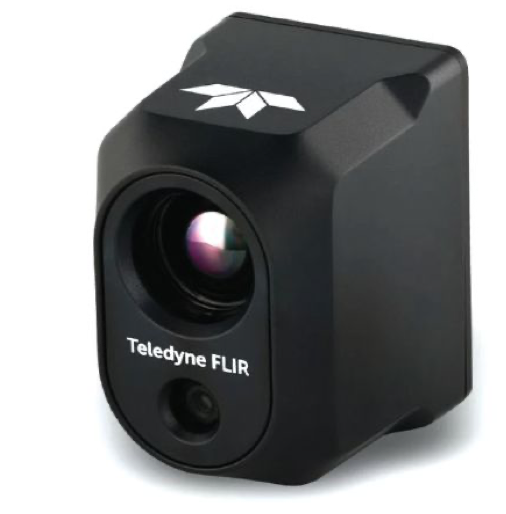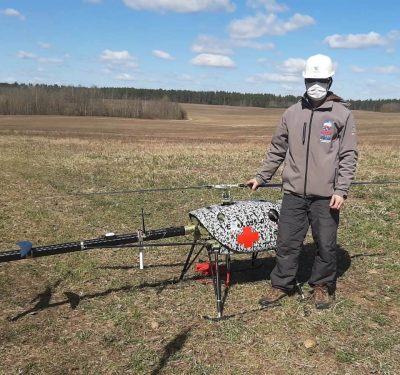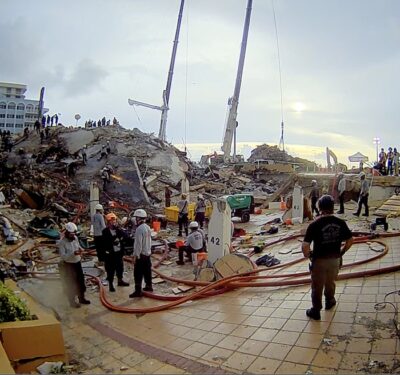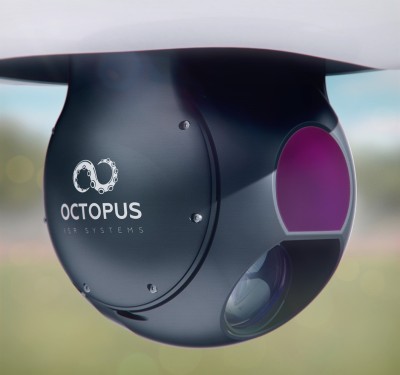
Teledyne FLIR is moving forward with two camera modules that offer high performance in compact packages.
Kelly Brodbeck, Teledyne FLIR’s product manager, commercial/industrial, and I were facing off. I held a coin up at our interview table while Brodbeck hoisted the just-slightly-larger but far more capable black cube that is the Hadron 640R. He won.
This 640R update to the Hadron line offers an improved 640 x 512 resolution radiometric thermal and visible dual camera module. “It’s an integration module that our customers use to get a big head start on equipping their drones with high-resolution thermal and visible,” Brodbeck said. A Boson longwave infrared (LWIR) thermal camera can see through clouded conditions, while a Teledyne FLIR 64 MP visible camera can deliver imagery compatible with high-end processors for AI and machine learning applications.
Designed to maximize efficiency in that small package, the dual sensor EO/IR capability can be used not only by UAS but as “eyes of the robot” for UGVs. Brodbeck provided an example from a law enforcement exercise of the increased detail furnished by the set-up. “A guy out in a field. Is he waving? Is he a happy guy? As it turns out,he’s one of us, but he has a gun in his hand. With this, you could see that’s a gun, and without it you have no idea. As far as raising situational awareness and helping law enforcement, you need this level of resolution.”
With sample availability scheduled for June and shipment in July, the 640R’s integration will reduce both development cost and time to market. “You’re not paying engineers’ time to do all the stuff that we’ve already done,” Brodbeck said. This is complicated stuff and we just wanted to take a lot of the work out of it.”
THE INTEGRATED NEUTRINO
Teledyne FLIR also continues to evolve another small, lightweight package, its Neutrino® high-performance and SWaP+C MWIR [mid-wavelength infrared] OEM camera modules. VP of Product Development for OEM Dan Walker ticked off upgrades: “Higher frame rates, larger focal planes. We cool the focal plane quite a bit to get further out, and we’ve put larger optics on it so we can see out past 20 miles.”
The ruggedized system is “qualified for full military range,” Walker continued. He also cited the system’s low vibration. “That’s important in a gimbal,” he explained. “Vibration causes stability issues. You have to compensate for that in the gimbal, which also takes power.
“All ISR products are good candidates” for integration, Walker said about uses for the Neutrino®. “Border surveillance, perimeter surveillance—you want to be seeing far away. You would take a typical ISR application, put it on a mast, put some radars around it and use that for counter-UAS.”
Teledyne FLIR’s acquisition of New England Optical Systems three years ago has contributed to the line’s success. “That allowed us to integrate continuous zoom lenses with mid-wave IR cameras,” Walker said. Also, Neutrino is a near-off-the-shelf solution. “Anyone who’s integrated lenses and camera knows that can be very difficult. We’ve taken that off the table.”






